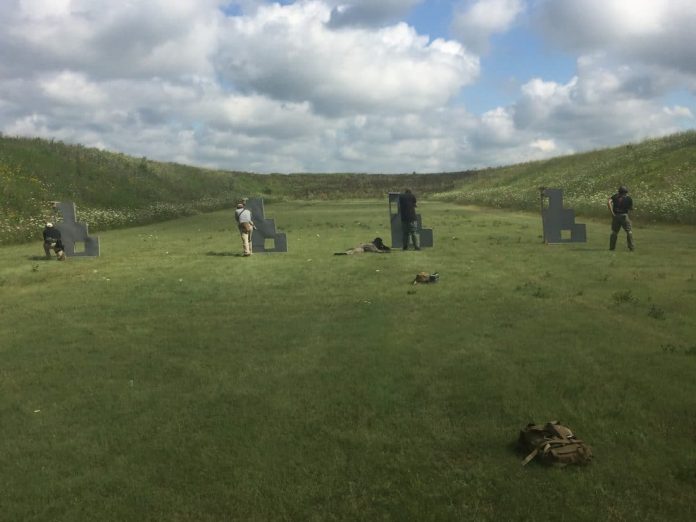
I recently had the pleasure of attending a Practical Urban Carbine Class that was instructed by Steve Fisher of Sentinel Concepts. If you aren’t aware of who or what sentinel concepts is you find more information about them here. They offer a variety of classes in their training curriculum. I was pretty excited about this class because its different from a standard carbine class and is only offered a few times a year. Before I get into more detailed specifics on the class, here is what Sentinel Concepts has to say about the class.
The premise of this class is based on the US Census Bureau report that 80% of the American Population lives in Urban areas. An urban area’s location is characterized by high human population density and defined within an area approximately of 200-300 yards and surrounding. Using these metrics this mid-level course reintroduces students to their rifles, working in varied terrain, and over distances between 0 and 300 yards.
With that being the basis of the class, I quickly realized this wasn’t going to be a normal carbine class of shooting at a max distance of 100 yards. I have been to a few carbine classes over the years hosted by different instructors. Most of those classes consisted of a max distance of 50 yards. Don’t get me wrong nothing was wrong with going to those classes, but after attending a few and getting the fundamentals down I was itching to shoot at more intermediate distance.
The class took place at the Brownells Shooting Range in Searsboro, Iowa. They have a pretty beautiful range with tons of steel, barricades., and shooting bays to die for. We used the 600 yard range for the class. The class was about a 50/50 split of responsible armed citizens and Law Enforcement. The class was also about a 50/50 split of 1x power red dots to variable power optics. The gun I ran for this class was an ADM MOD 1 LE. The Practical Urban Carbine curriculum is a three day class and includes low light shooting. This was a two day class due to some range consideration and logistical issues. Not to worry, a lot of learning from the students still happened. Just a reminder this isn’t a synopsis of the entire class, it’s a few things I think are really important to get out to you guys and gals.
Steve started off with the medical brief and a basic introduction about the class and some of the information we would be covering. The first half of the day we talked about, debated, and zeroed our rifles. If you are unsure what the term zeroing means, I would take a second and read about zeroing here. Steve is a big fan of running a 200 yard zero, and no that wasn’t a typo. Notice I said a 200 yard zero not a 50/200 yard zero. Yes, there is a difference and the 50/200 yard zero is close but not the same. In the past five or so years the 50/200 yard zero has become pretty popular among the training community and law enforcement. Steve went on to explain a lot of people are switching over to a 50 yard zero due to range limitations which Is understandable, however they seem to think without confirming at 200 yards they have a hard 50/200 yard zero. Guess what we did next? Yeah, we got a good hard zero at 50 yards, and then shot 100-yard target to see the difference. Then we finally shot at 200 yards and made adjustments and everyone confirmed their 200 yard zero.

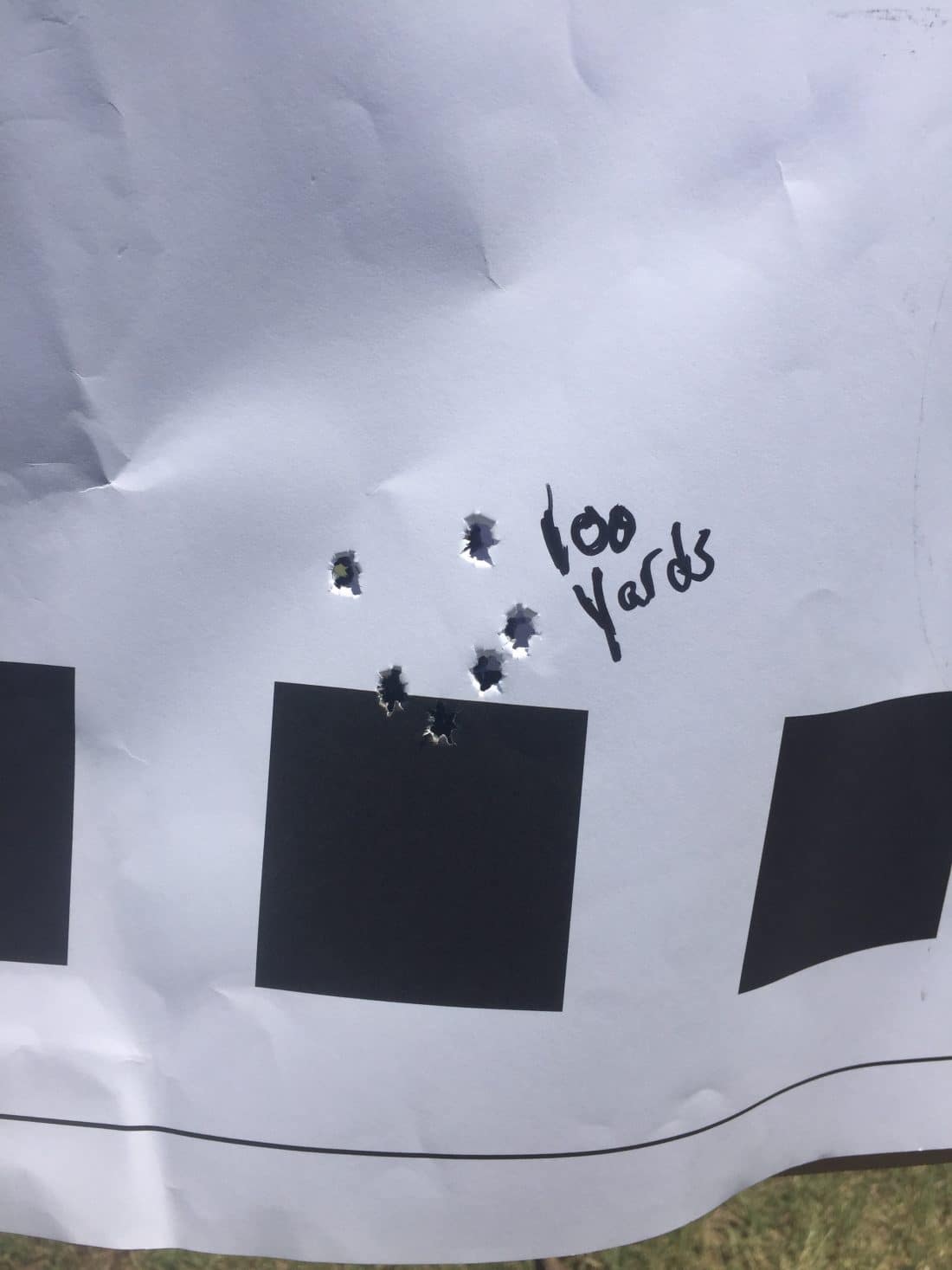
 Notice in the pictures, I had a hard 50 yard zero, then my point of impact shifted at 100 yards, and finally my point of impact at 200 yards. I took these pictures to prove a 50 yard zero is not the same as a 200 yard zero. No adjustments were made after the 50 yard target was shot. The black boxes we were shooting are 3 inches by 3 inches. No adjustments were made after zeroing at 50 yards.
Notice in the pictures, I had a hard 50 yard zero, then my point of impact shifted at 100 yards, and finally my point of impact at 200 yards. I took these pictures to prove a 50 yard zero is not the same as a 200 yard zero. No adjustments were made after the 50 yard target was shot. The black boxes we were shooting are 3 inches by 3 inches. No adjustments were made after zeroing at 50 yards.
After getting the zeroes knocked out we went over Sling usage and sling positioning on the guns. I would love to talk more about slings and sling usage because I feel it’s a lost art, but Il let you guys go to a class and get your learning on. It would benefit you more than hearing me go on and on about it.
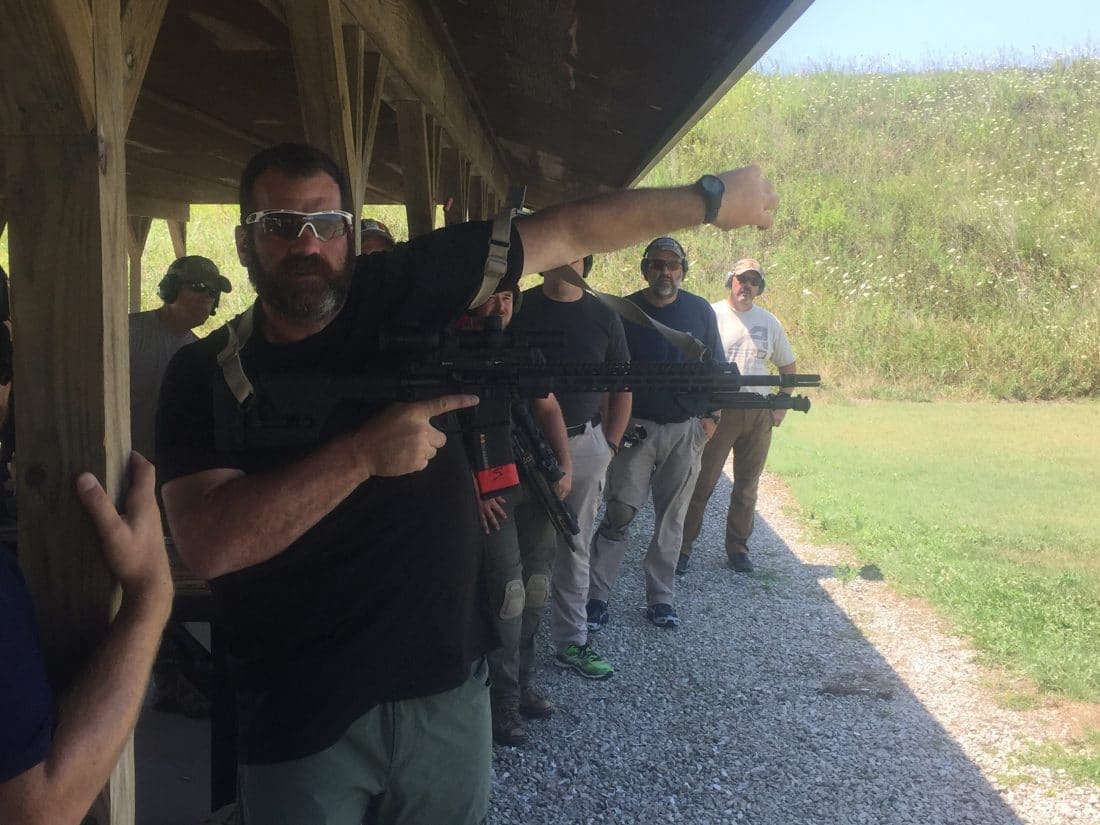
All of day two was pretty barricade heavy and it was great. “Barricades are one of the most underutilized and under taught subjects in shooting and Law Enforcement” explained Fisher. We went over the basic shooting positions like kneeling, sitting, squatting, and everything in between before we started playing using the barricades. This was important so students could understand the limitations they had with their bodies and how comfortable they were before the barricades came out.
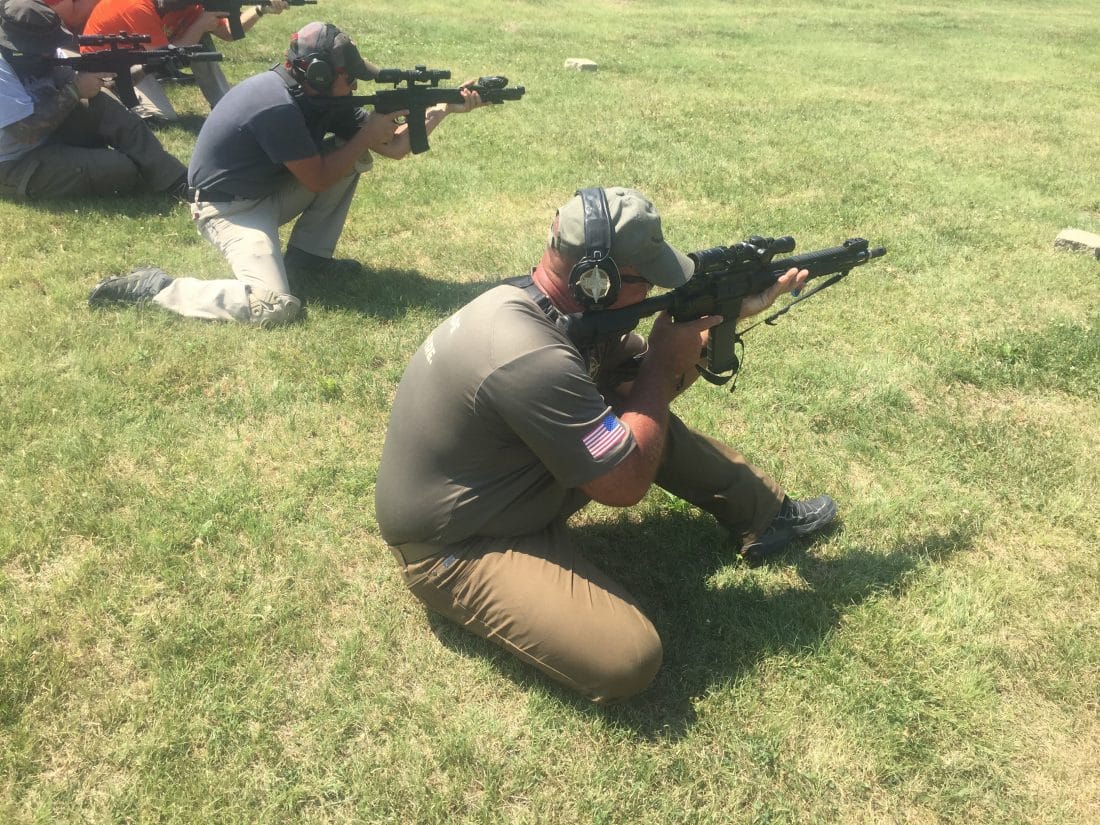
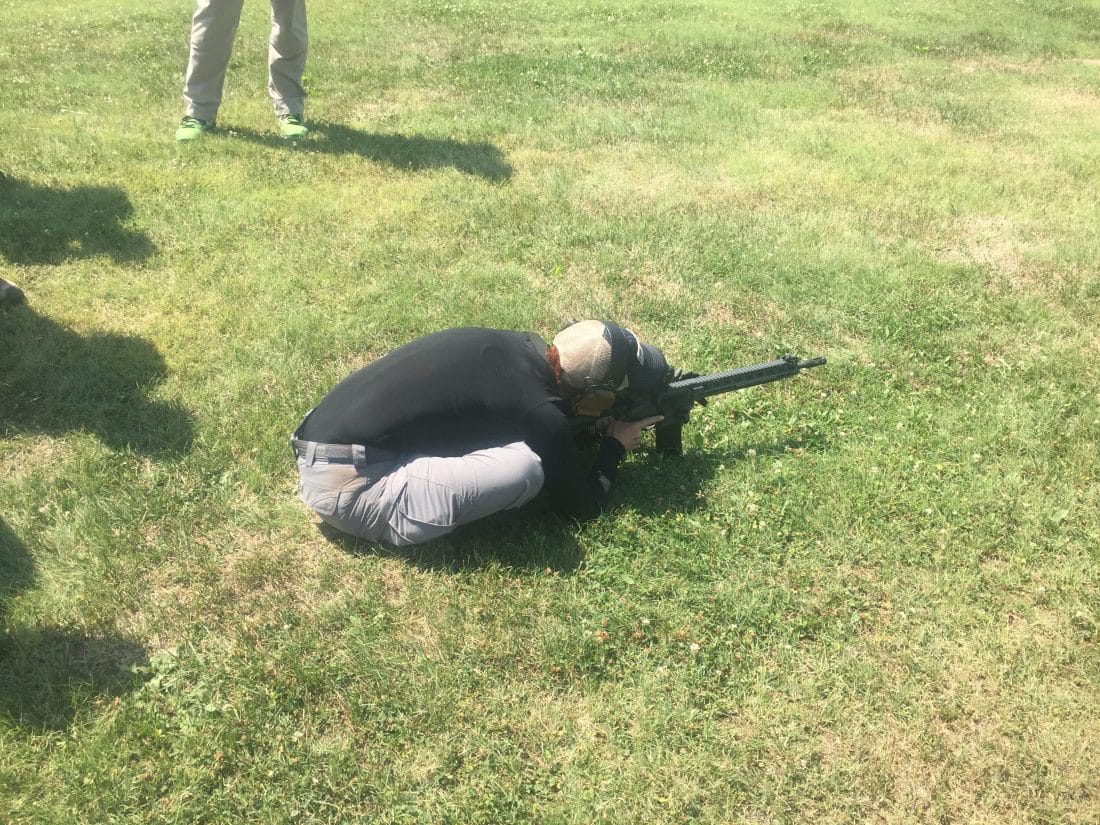
When The barricades finally came out everyone ran through them left handed, right handed, kneeling, squatting, and sitting. Then we bumped back to a further distance and did it all over again. The best part was getting all these reps in made students more comfortable and they figured out very quickly what position worked for them individually as a shooter compared to the guy or gal to their right. Fisher was great about showing people a way to do something not THE way to do something. Options are great to have especially when you think real world applications of shooting from cover. Cover can change and isn’t always going to be the same piece and all perfect like what you practice with on the range.
At 200 yards things got interesting. Fisher introduced controlled pairs to us. One sight picture and two trigger pulls. This had a few teaching points to it. If you are doing everything correctly like using your sling, a good solid base, and proper recoil management, then your chances of getting both your hits on the steel were pretty good. Before anybody says it, its way harder than it sounds.
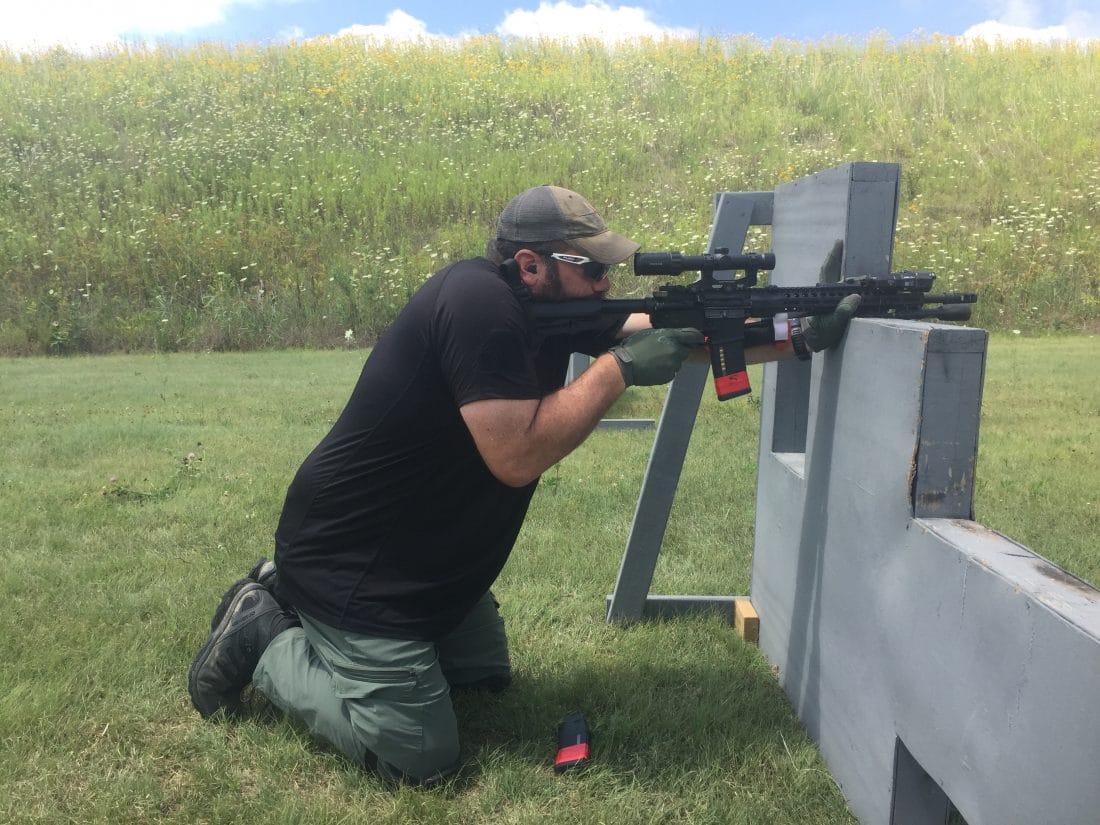
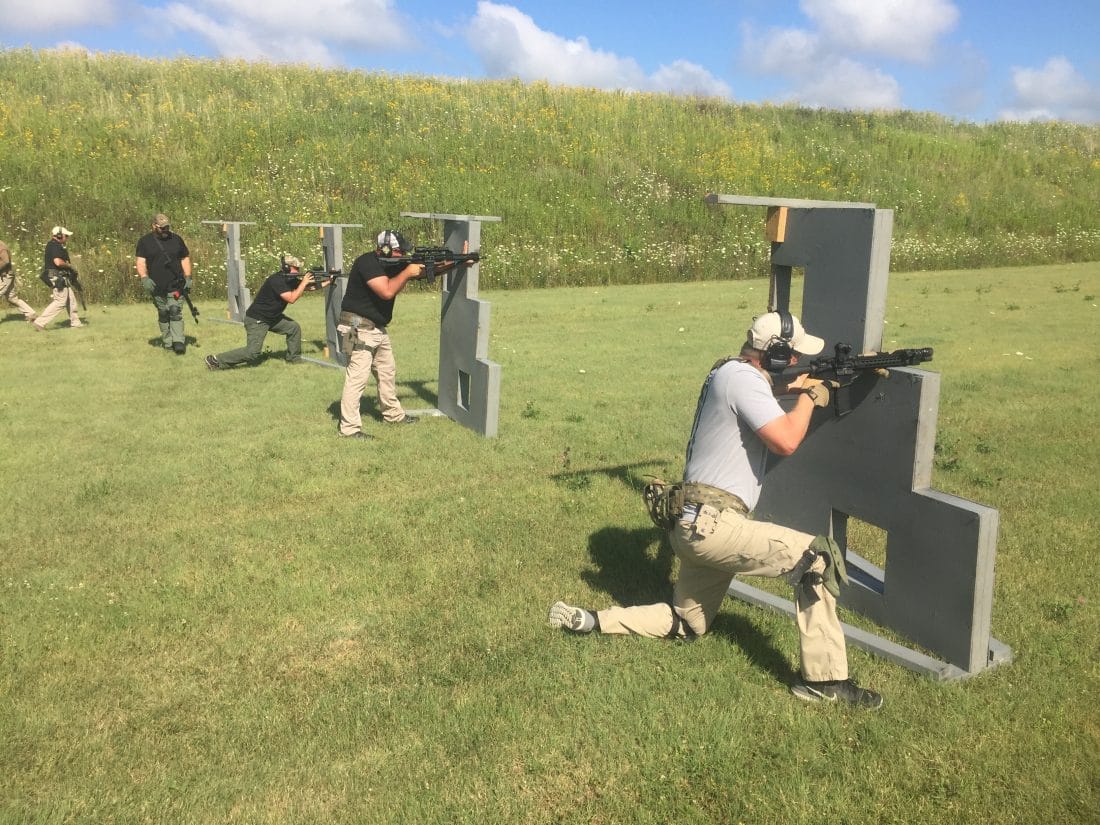
After all the fun was had at 200 yards we bumped back to 300 yards. This is where things got interesting. At 300 yards the sling becomes more important and a variable power optic becomes very useful. All the students running one power optics were really good shooters, but at 300 yards a lot of people were having trouble even seeing the steel plates let alone being able to get a clear sight picture. Some of these guys didn’t have an option on what they could mount on their rifle due to their department policy, but it was a good learning experience for them to see what their limits where with their rifle setup. Thus enter the Variable power optic, it was nice being able to crank up the magnification and gather information. Most of the students in the class hadn’t actually done all too much shooting at 300 yards, so it was nice to not only be able to shoot at that distance but also do it behind barricades.
Like I said before this wasn’t a full synopsis of Fishers class, it was a few key points and some important information I wanted to talk about. There were way too many golden nuggets in the class to talk about, and people need to hear and see for themselves. I literally have four pages of notes with awesome information on them I couldn’t fit into this article.
Here are a few important notes that most of the class seemed to key in on. Slings are important as well as sling setups on the rifle. Zeroes and knowing your zero is important. Knowing what your limitations are with your carbine setup are important, as well as how your setup works with barricades. Also barricades, barricades and more barricades. Cover is no joke when things get real and knowing how to use your cover to your advantage is something worth practicing.
All in all, the class was very informative and everyone learned something and had a few takeaways. If your someone who has been thinking about getting into a class like this are or looking for something different than the normal carbine class I would highly advise you give this class another look and sign up.



